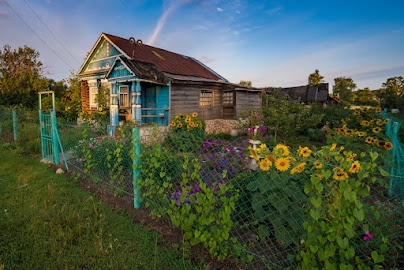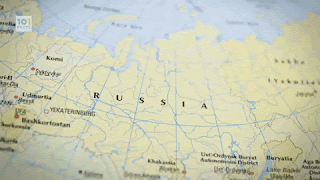This is the time of year when gardeners pour over seed
catalogs and haunt home and landscape websites as they decide what their 2022
gardens will look like. If you’re still unsure of what you want to do, I’d like
to suggest you take some inspiration from Russian dacha farms.
The model for these garden plots is called dacha gardening. Dachas have been a
part of Russian life for centuries. At one time, they were mostly rural
estates of nobleman and political elites looking to escape city summers. But,
after the after the traumas of World War I and the Bolshevik Revolution, there were serious food shortages and the people turned
back to what they knew – tending the land. The idea of a dacha changed from an
elitist retreat to a small plot of land for growing a garden, with living
structures that were initially very basic. Millions of city-dwelling Russians
began commuting back and forth to their dacha gardens in the spring and summer.
The whole custom has worked so well that it continues to this day.
The rise of dacha gardens in the early part of the 20th
century was initially an informal and organic response to food insecurity, but
the state soon stepped in to regulate the allotments. It was not just the
land that was regulated, but also what was planted and how it was laid out.
This may seem a bit over-reaching regulation-wise (something the Soviets were
well known for), but in this case the model they presented was essentially what
had been working for centuries. A traditionally laid out Dacha garden perfectly
encapsulates not just Russian food culture but includes crops that can work
within the short growing season to provide exactly what is needed and desired.
Classic dacha gardens are an average of 600 square meters (or
around 6458 square feet) in size and will contain cucumbers, tomatoes, beets,
radishes, carrots, garlic, dill, horseradish and potatoes. Potatoes are
especially important for a couple of reasons; they are undeniably nutritious,
but they are also what old-fashioned vodka comes from (to this day, it is
estimated that more than 90% of Russia’s potatoes come from small farms). Berries
are also grown, with currants, gooseberries and strawberries being popular. Another
essential ingredient in a dacha garden are the fruit trees, often placed around
the plot to form growing fences. A wide variety of fruit trees are cultivated,
including apple, pear, cherry and plum. And don’t forget the flowers –
particularly those like the sunflower that offer more than just beauty. These crops create a beautiful garden that promises a well-rounded,
nutritious and flavorful harvest. And, of course, it is all organic.
Dacha gardens are a uniquely Russian creation that are like mini snapshots of their rich culture. After all, where else would you find a greenhouse shaped like a Russian submarine? If this blog has stirred your interest, there is a lot of information out there about them. You can research them as a food cultivation subject, or from a socio-political or historical viewpoint. There are probably other angles as well, but you get the idea. And if you are interested in what's happening currently, here is a nice little video that shows what a dacha garden looks like for a family today, and this article is a first-person account of a dacha community that was written last summer.
Submitted by Pam












No comments:
Post a Comment